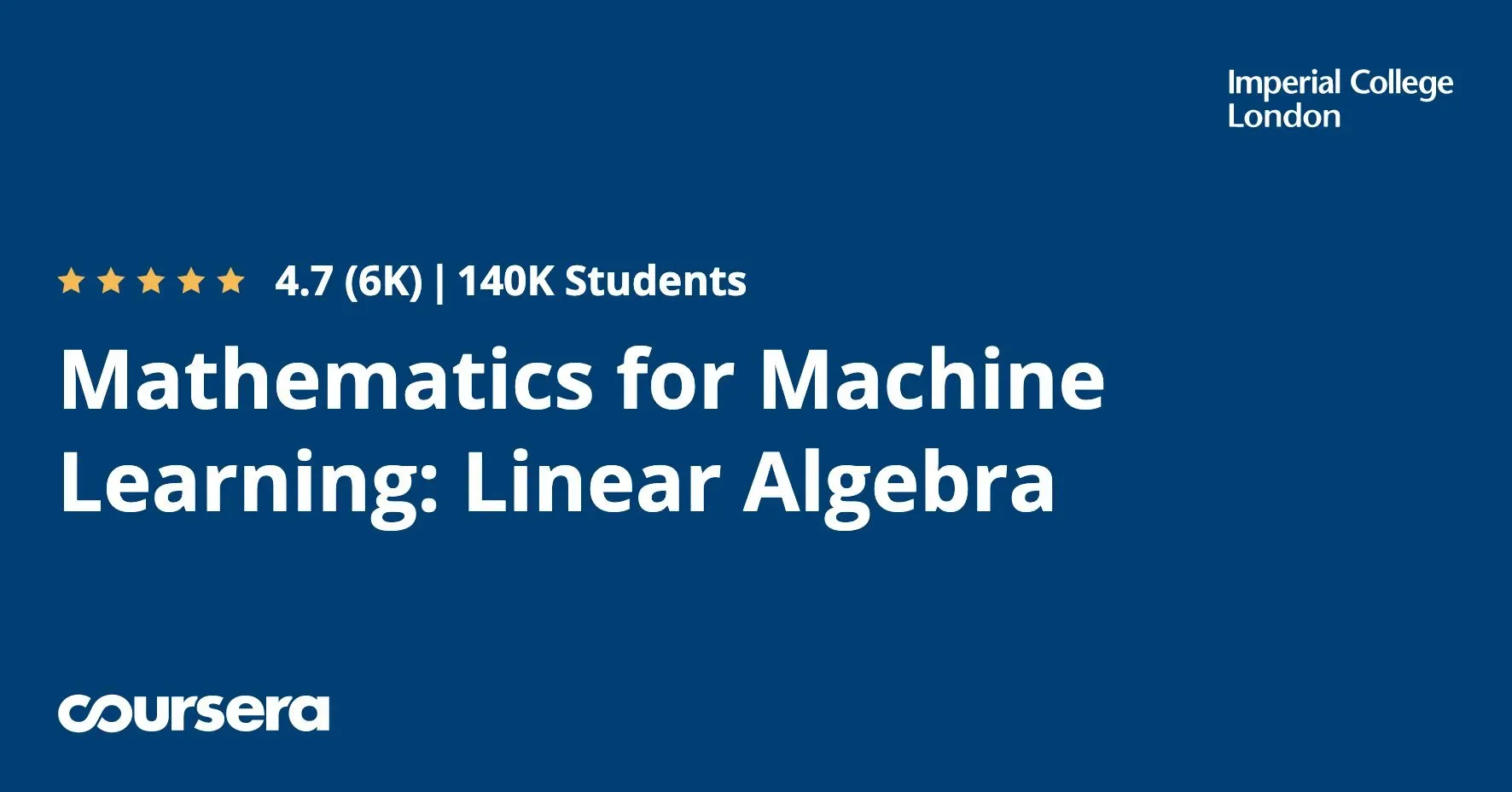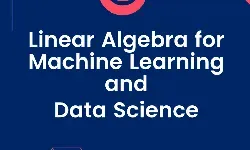
Matrix Methods

This course introduces learners to Matrix Methods, a powerful tool for machine learning and data analysis. Topics include matrix-matrix multiplication, solving linear equations, orthogonality, and best least squares approximation. Optional Python examples are used to illustrate the concepts and allow learners to experiment with the algorithms.▼
Course Feature
![]() Cost:
Cost:
Free
![]() Provider:
Provider:
Coursera
![]() Certificate:
Certificate:
Paid Certification
![]() Language:
Language:
English
![]() Start Date:
Start Date:
29th May, 2023
Course Overview
❗The content presented here is sourced directly from Coursera platform. For comprehensive course details, including enrollment information, simply click on the 'Go to class' link on our website.
Updated in [March 06th, 2023]
Matrix Methods is a course designed to introduce learners to the basics of mathematical matrix methods. This course will cover topics such as matrix-matrix multiplication, solving linear equations, orthogonality, and best least squares approximation. Additionally, learners will explore the Singular Value Decomposition, which is a fundamental tool for dimensionality reduction, Principal Component Analysis, and noise reduction. Optional examples using Python will be used to illustrate the concepts and allow learners to experiment with the algorithms.
[Applications]
After completing this course, learners can apply the concepts of Matrix Methods to a variety of data analysis tasks. They can use matrix-matrix multiplication to solve linear equations, use orthogonality to reduce noise, and use the Singular Value Decomposition to reduce the dimensionality of data. Learners can also use the Python examples to experiment with the algorithms and apply them to their own data sets.
[Career Paths]
1. Data Scientist: Data Scientists use Matrix Methods to analyze and interpret data, develop predictive models, and create data-driven solutions. They are responsible for collecting, cleaning, and organizing data, as well as developing algorithms and models to analyze the data. With the increasing demand for data-driven solutions, the demand for Data Scientists is expected to grow significantly in the coming years.
2. Machine Learning Engineer: Machine Learning Engineers use Matrix Methods to develop and deploy machine learning models. They are responsible for designing, building, and testing machine learning algorithms, as well as deploying them in production. With the increasing demand for AI-driven solutions, the demand for Machine Learning Engineers is expected to grow significantly in the coming years.
3. Data Analyst: Data Analysts use Matrix Methods to analyze and interpret data, develop insights, and create data-driven solutions. They are responsible for collecting, cleaning, and organizing data, as well as developing algorithms and models to analyze the data. With the increasing demand for data-driven solutions, the demand for Data Analysts is expected to grow significantly in the coming years.
4. Artificial Intelligence Engineer: Artificial Intelligence Engineers use Matrix Methods to develop and deploy AI-driven solutions. They are responsible for designing, building, and testing AI algorithms, as well as deploying them in production. With the increasing demand for AI-driven solutions, the demand for Artificial Intelligence Engineers is expected to grow significantly in the coming years.
[Education Paths]
1. Bachelor of Science in Mathematics: This degree program provides a comprehensive overview of mathematics, including matrix methods. Students will learn the fundamentals of matrix-matrix multiplication, solving linear equations, orthogonality, and best least squares approximation. This degree is becoming increasingly popular as the demand for data analysis and machine learning grows.
2. Master of Science in Data Science: This degree program focuses on the application of mathematics and statistics to solve real-world problems. Students will learn how to use matrix methods to analyze and interpret data, as well as how to use them to develop predictive models. This degree is becoming increasingly popular as the demand for data scientists grows.
3. Doctor of Philosophy in Machine Learning: This degree program focuses on the development of algorithms and techniques for machine learning. Students will learn how to use matrix methods to develop and optimize machine learning algorithms. This degree is becoming increasingly popular as the demand for machine learning experts grows.
4. Master of Science in Artificial Intelligence: This degree program focuses on the development of algorithms and techniques for artificial intelligence. Students will learn how to use matrix methods to develop and optimize artificial intelligence algorithms. This degree is becoming increasingly popular as the demand for AI experts grows.
Pros & Cons
-

Good realtime examples
-

Interesting topics
-

Good practice
-

Useful tools
-

Poor quality
-

Lack of explanation
-

No python content
-

Unhelpful extra material
Course Provider






